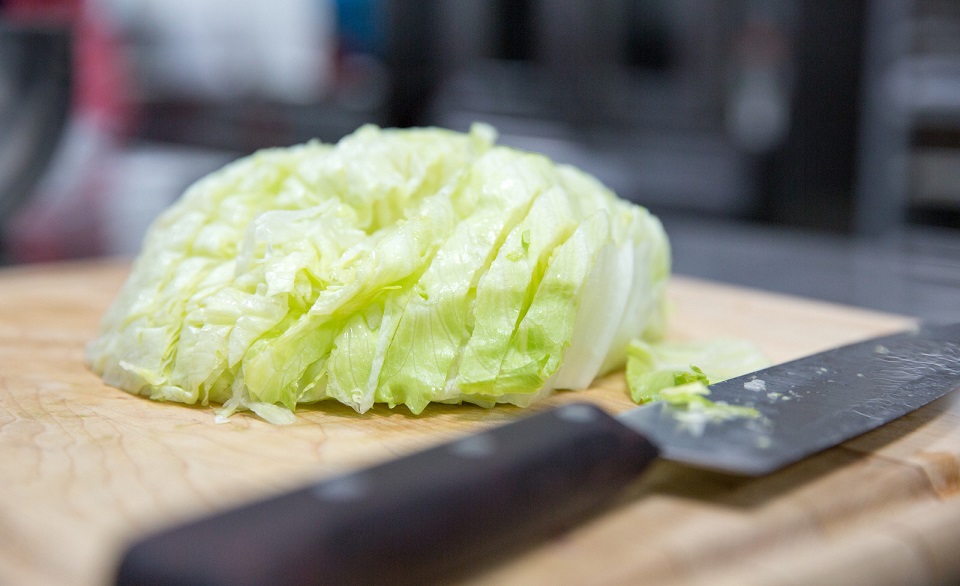E. Coli Outbreaks, The Gift that Keeps on Giving
Late in December, in response to possible E. coli contamination, we saw a recall issued for 7,000 pounds of ground beef. While 7,000 pounds of ground beef is not a lot in the grand scheme of the meat industry, it did impact multiple states. This came on the heels of another recall in early December when a Colorado company recalled 563 pounds of ground beef. This comes at the same time that investigators are looking into an E. coli outbreak that sickened 30 after consuming raw milk cheese in the UK.
We continue to see outbreaks of E. coli within the foodservice industry. We’ve discussed E. coli before in these blogs, including outbreaks of E. coli linked back to flour and the E. coli outbreak that changed the face of food safety in the United States, but I thought it might be appropriate to delve into E. coli a bit more and discuss what it is, understanding it in relation to our foodservice operations, and how you might deal with a suspected incident.
E. coli represents a large group of bacteria and many of the strains are harmless, but, as you know, others can truly be deadly. These deadly strains of E. coli produce a toxin that can make you ill. Think of a toxin like a poison. These toxins are known as Shiga Toxin, which results in these deadly forms of E. coli being referred to Shiga toxin-producing E. Coli, or STEC. The most common form of these is the O157 variant, which is estimated to cause around 95,000 infections each year, resulting in around 3,600 hospitalizations and 30 deaths each year in the US. But keep in mind that there are other variants of E. coli that cause illness, such as 0103, which is what caused the recent recall of Colorado ground beef referenced above.
In foodservice operations, where handling, preparation, and distribution of food are routine activities, the risk of contamination is elevated. Common sources of E. coli in foodservice settings include produce and raw meat. Raw meat is commonly known as a carrier of E. coli, but when I took my first food safety class back in the late-1990s, fresh fruits and vegetables were not even mentioned when talking about E. coli, this it is important that special care is taken to protect these items in the food chain.
The most common form of E. coli is the O157 variant, which is estimated to cause around 95,000 infections each year, resulting in around 3,6000 hospitalizations and 30 deaths each year in the US.
Of course, cross contamination or poor handling practices can also result in E. coli outbreaks. Also cited as common sources of contamination are inadequate or improper handwashing, cross contamination via cutting boards, and insufficient sanitation of utensils.
The best method to deal with E. Coli is the same as any foodborne pathogen – practice good defense. That starts with employee training and making sure your team is informed about the most up-to-date food safety guidelines and recommendations. Then, develop strong relationships with reputable suppliers. Make sure your daily cleaning and sanitizing routines follow the plans laid out in your SOPs. Temperature monitoring should also be closely monitored to ensure any item that is cooked is done so to the proper temperature.
When faced with suspected or confirmed cases of E. coli, a prompt response is important to mitigate the impact on consumers and the reputation of your business. First, if you have reason to believe that you have an outbreak, reach out to your health inspector and your local health department. Don’t view them as the enemy. They can help you identify the source.
If you don’t have legal counsel on retainer, now is a good time to reach out to one. He or she can help you facilitate communication with the public. You want to be sure to communicate with customers and the public about the incident, but you want to be sure what you say does not open you up to legal issues in the future. Provide clear information about the steps being taken to address the issue, above all, he honest.
Give your business a thorough and deep cleaning of all surfaces, equipment, and utensils. Your health department will help formulate a plan to make sure your customers and employees are protected once you reopen. As you are going through this process, reevaluate and update your sanitation protocols to prevent future occurrences.
The recent outbreaks of E. coli across the world help to underscore the need for vigilance and proactive measures to protect your business. By understanding the causes of E. coli, implementing appropriate responses during incidents, and implementing preventive strategies, you can protect your business and your livelihood. Risk Nothing.
READ MORE POSTS
Greens & Spinach – Please Lettuce Be Safe to Eat
According to the new food nutrition pyramid, we are to eat at a minimum, around 3 cups of dark green vegetables along with other servings of fruits and vegetables each week. That is becoming more difficult as outbreaks such as E. coli 0157:H7 creates bad news for the produce industry, not to mention the victims.
Refrigeration Tips to Keep Your Food Safe
A refrigerator is one of the most important pieces of kitchen equipment for keeping foods safe. In a food service environment, our existence depends on the cooling equipment. The science of refrigeration has evolved from prehistoric times when man found his wild game would last longer packed in the coolness of a cave or packed in snow. Our ancestors harvested ice to keep food cold. Now, if the power goes off, we are instantly reminded of the refrigerator’s importance to our daily life, at home and certainly in a food service facility.









